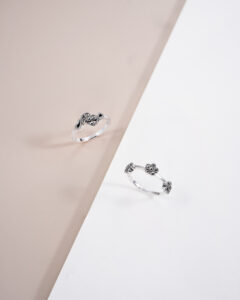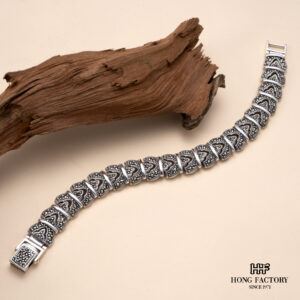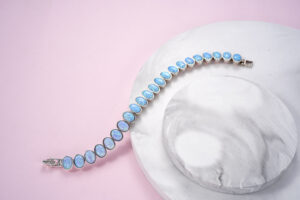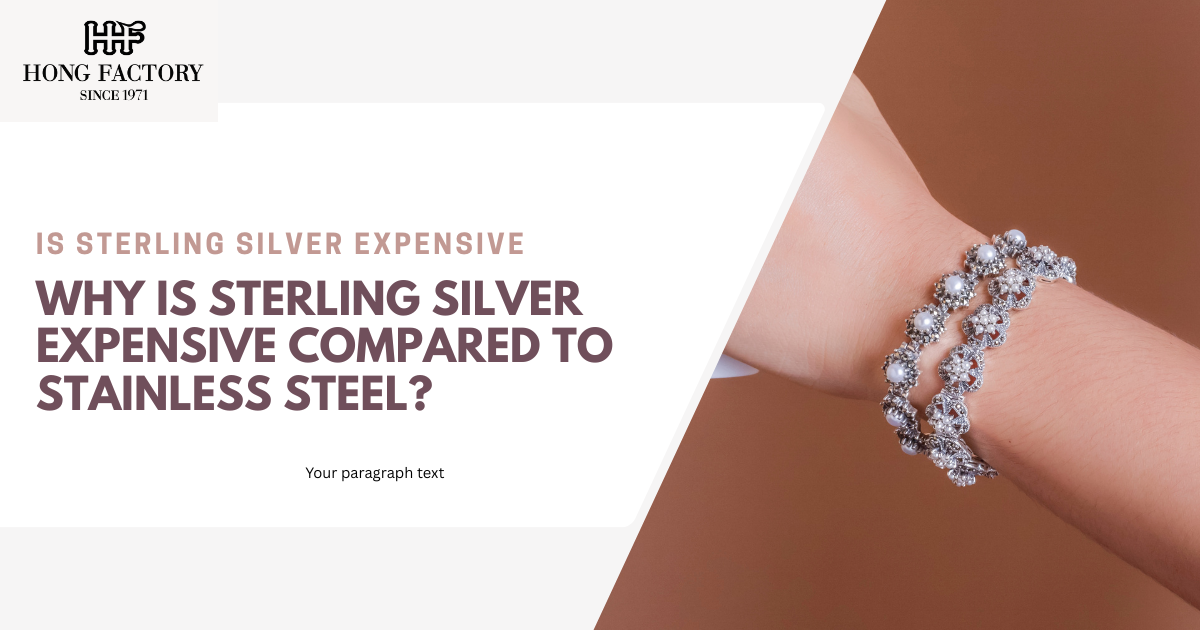
Sterling silver and stainless steel are both popular choices in the jewelry world, known for their strength, beauty, and durability. However, there’s a noticeable price difference between them. Many people ask why is sterling silver more expensive than stainless steel? The answer lies in the purity of the metal, craftsmanship, and long-term value that sterling silver offers. 925
What Is Sterling Silver?
Sterling silver is a high-quality alloy made of 92.5% pure silver and 7.5% copper or other strengthening metals. This combination maintains silver’s brilliant luster while improving its durability. Authentic sterling silver jewelry is stamped with a “925” hallmark, signifying purity and authenticity.
Stainless steel, on the other hand, is an alloy of iron, carbon, chromium, and nickel. While it is corrosion-resistant and durable, it does not contain any precious metal content, making it less valuable in comparison.
Is Sterling Silver Expensive?
The question “Is Sterling Silver Expensive” often depends on what it’s being compared to. When placed side by side with stainless steel, sterling silver does cost more but this price difference is justified by several key factors.
Reasons sterling silver costs more than stainless steel include:
- Intrinsic value: Sterling silver is a precious metal, while stainless steel is industrial-grade.
- Craftsmanship: Sterling silver jewelry often involves detailed handwork and finishing.
- Purity and hallmark: Each sterling piece has tangible silver content that retains value.
- Aesthetic appeal: Silver’s natural shine and elegance make it desirable for fine jewelry.
- Longevity: Sterling silver can last for generations with proper care.
These qualities make sterling silver jewelry more luxurious and valuable than stainless steel alternatives.
Durability and Maintenance
One of the main differences between sterling silver and stainless steel lies in durability. Stainless steel is incredibly tough and resistant to scratches, tarnish, and corrosion, making it perfect for everyday wear. However, its industrial nature gives it a colder, less refined appearance.
Sterling silver, while softer, is a precious metal that can be polished and restored over time. Tarnish may appear, but it can easily be removed with proper care, returning the jewelry to its original brilliance. This makes sterling silver an enduring material for heirloom-quality jewelry.

Aesthetic and Design Value
Jewelry made from sterling silver often features intricate designs, delicate settings, and gemstone embellishments. Its soft, malleable nature allows artisans to craft complex patterns and fine details that stainless steel cannot replicate.
Stainless steel jewelry tends to have a more modern, minimalist look, suitable for men’s accessories or fashion jewelry. Sterling silver, however, exudes elegance and refinement, appealing to customers seeking timeless beauty.
Market Value and Investment
Sterling silver holds intrinsic value as a precious metal. Its price is influenced by global silver markets, meaning it can appreciate over time. Stainless steel, being a mass-produced alloy with no intrinsic precious value, does not offer the same investment potential.
This difference explains why sterling silver jewelry can be resold or passed down as an asset, while stainless steel remains primarily a fashion material with limited long-term worth.
Craftsmanship and Artistry
The artistry involved in making sterling silver jewelry significantly contributes to its price. Each piece is often handcrafted, polished, and finished with precision. Many artisans use sterling silver to create custom, one-of-a-kind designs, elevating the metal beyond mere ornamentation.
In contrast, stainless steel jewelry is typically mass-produced using molds and machines. While efficient, this process lacks the personal touch and fine craftsmanship that define sterling silver.
Hypoallergenic Qualities
Another factor that influences price is skin sensitivity. Sterling silver is naturally hypoallergenic, making it safe for people with sensitive skin. Stainless steel, however, often contains nickel a common allergen that can cause irritation.
This hypoallergenic quality adds to sterling silver’s appeal, especially for earrings, rings, and necklaces that come into direct contact with the skin.

Fashion and Prestige
Sterling silver has long been associated with elegance and sophistication. It pairs beautifully with gemstones such as turquoise, marcasite, or zircon, giving it a luxurious appeal. Stainless steel, while fashionable, is viewed more as a casual or industrial metal.
Customers are often willing to pay more for sterling silver because it symbolizes refinement, craftsmanship, and authenticity. Its timeless charm ensures that it never goes out of style.
Sterling silver may be more expensive than stainless steel, but its price reflects its real value. With higher purity, superior craftsmanship, and lasting elegance, sterling silver stands as a symbol of quality and prestige.
For those seeking affordable luxury, sterling silver bridges the gap between practicality and sophistication. While stainless steel offers strength and simplicity, sterling silver delivers beauty, authenticity, and emotional connection making it a truly worthwhile investment in the world of fine jewelry.
